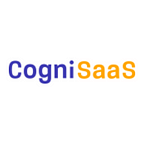The Future of B2B SaaS Customer Onboarding in 2023 [5 Trends to Watch Out For]
Blog by: Megha Poojari
While 2022 saw the rise and fall of many B2B SaaS organizations, there’s no denying the fact that many VC firms and B2B investors still consider that there are a lot of opportunities to look forward to in 2023. As the investments come through, the pressure of performing well overwhelms the organizations.
The competitive landscape of B2B SaaS has definitely changed, and what was entirely product-centric and new logo acquisitions-based valuations are now gradually shifting to companies that are customer-centric and their existing & retention of customer logos.
Everyone has now started realizing that acquisition-led growth doesn’t necessarily mean that the company is growing faster and the only factor that is taking the front seat is customer-led growth, i.e., customer centricity.
So, what are the few factors that enterprise SaaS companies should consider in order to adopt customer-centricity in 2023?
Let’s take a look.
Onboarding Definitely Matters
When adopting customer-centricity organization-wide, many organizations need to recognize the need for customer-centricity begins from the customer onboarding stage.
Around 74% of the customers plan on switching to a new solution if they feel that the onboarding process of the selected solution needs to be simplified! That means your product could solve 100% of your customer’s problems, but you are now losing a customer just because of a poor onboarding process, you are now losing a customer.
In 2023, organizations should focus on creating a holistic onboarding experience for their customers. This includes creating multiple AHA moments across the customer journey, i.e., from onboarding to the go-live stage.
Identifying the Leading Real Indicators of Customer Retention
Several enterprise SaaS companies consider product adoption, NPS, and relationships with key stakeholders as the leading indicators of customer retention. Though these factors are important, these aren’t the “leading” indicators to help businesses forecast churn.
In fact, these can be termed as the lagging indicators of churn. So, what are the leading indicators of customer retention?
Simply put, indicators of churn or customer retention need to be measured right from the onboarding. Gaps between the customer use cases and the product shared understanding of customer business outcomes across teams, timely delivery of use cases and not just the product feature, etc., can be termed as leading indicators of customer retention.
Identifying these real indicators will genuinely help any B2B SaaS organization to be customer-centric in 2023.
Cross-functional Collaboration and its Importance
When B2B organizations talk about customer-centricity, they often direct this KPI to their customer success teams. However, most enterprises fail to consider that cross-functional team collaboration is, if not equally, utmost importance for customer retention.
2023 will be the year when more and more enterprise SaaS companies adopt a single source of truth platform to collaborate with internal teams and their customers. Gone are the days of silos of tools and missed communications among the teams and the customers.
Focus on Customer Business Outcomes
In one of his recent LinkedIn posts, renowned customer success consultant Markus Rentsch mentioned how crucial it is for enterprise SaaS companies to focus on customer business outcomes rather than on one’s product or feature.
What many enterprise SaaS organizations focus on, even in 2022, are selling and upselling their features to their customers. And when they fail to see any type of adoption from their customers, it gets entirely blamed on the customer success teams.
Cross-functional teams (pre-sales, onboarding, implementation, customer success) must be all on the same page, i.e., understanding customer business outcomes by understanding their use cases.
Choosing the Right tool for Customer Onboarding
Now that we have spoken about how nailing the first impression, i.e., customer onboarding and cross-functional collaboration, including your customers, is essential, it also makes sense to talk about how investing in the right tool is essential.
When we talk about onboarding, implementation, customer success, retention, customers, management, etc., currently, all these stakeholders work on different sets of tools across the customer lifecycle.
2023 demands a tool that will help bridge the gap in communication amongst the internal and external stakeholders and help you create a lasting impression through customer onboarding.
An ideal customer onboarding tool should have visibility across clients, modules, tasks, and projects, along with facilitating cross-functional collaboration with internal teams as well as with the customers.
While a majority of enterprise SaaS companies are still stuck with project management tools for customer onboarding, it is high time that, in 2023, they account for some portion of their budget for the right customer onboarding tool.
Concluding Notes
We have all heard that “Prevention is better than cure.” In the current market conditions, retention is prevention & prevention can only be handled if it has been accounted for right from the beginning.
With several companies, especially ones in the B2B space, attempting to adopt customer-centricity and giving the proper attention to what’s more important to the customers than new logos, 2023 looks like a year to focus on customer onboarding.
And for anyone looking to evaluate their current onboarding process, reach out to our customer onboarding expert by clicking the link below!
It’s completely free.
Link: https://www.cognisaas.com/customer-onboarding-evaluation-by-cognisaas
